Butterfly Lifecycle Stages and Processes

The butterfly lifecycle is a remarkable process of change and growth
The butterfly lifecycle is a journey from a tiny egg to a beautiful flying insect. It’s one of the most interesting transformations in nature. Today, we’ll go through all the stages of a butterfly’s lifecycle.
Larval Stage vs Adult Stage
Before we begin, it’s important to know the difference between the larval and adult stage. We separate each stage because they have distinct phases with different forms, behaviors, and roles.
The larval stage (caterpillar phase), is focused on growth and development. During this stage, the caterpillar’s main job is to eat and grow.
In contrast, the adult stage happens when the caterpillar transforms into a butterfly. This stage is centered around reproduction and dispersal.
Eggs to Young Caterpillar
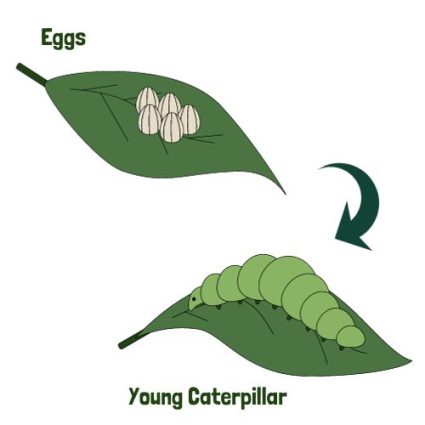
The “egg” in the butterfly lifecycle is the very first stage. It’s when the life of a butterfly begins. A female butterfly lays her eggs on suitable plants. They chose one that will provide the right food for the caterpillars when they hatch.
These eggs are tiny and often laid on the underside of leaves for protection. The egg stage lasts for a few days to a couple of weeks, depending on the species and environment.
The transition from an egg to a young caterpillar is an important phase in the butterfly’s life cycle. Inside the egg, the embryo develops, and when it’s ready, the caterpillar hatches.
This process involves the young caterpillar, or larva, breaking the eggshell. Once it emerges, the caterpillar’s first task is often to eat the empty eggshell, which provides nutrients. Finally, it immediately starts feeding on the host plant.
Caterpillar to Chrysalis

The “caterpillar” in the butterfly lifecycle is the larval stage. This is a time of significant growth and development. After hatching from the egg, the caterpillar’s main objective is to eat and grow. They feed almost exclusively on leaves, which provide them with the necessary nutrients for rapid growth.
The transition from caterpillar to chrysalis is a big change in the butterfly lifecycle. This process begins when the caterpillar stops eating and searches for a suitable spot to undergo its transformation.
Once it finds a safe location, it attaches itself to a surface, often a leaf or branch. Next, it sheds its skin for the last time to reveal the chrysalis or pupa. Inside the chrysalis, a remarkable transformation occurs called metamorphosis.
During this stage, the caterpillar’s body structures are broken down and reorganized into the form of an adult butterfly. This process can take anywhere from a few days to several months.
Chrysalis to Emerging Butterfly

The “chrysalis” in the butterfly lifecycle is the pupal stage. During this stage, the caterpillar’s body transforms into a butterfly. To the outside observer, the chrysalis appears dormant. But inside, the organism is busy reorganizing its tissues and structures.
The transition from chrysalis to butterfly is the final stage in the butterfly lifecycle. Inside the chrysalis, it restructures its body. For example, it forms wings, legs, antennae, and other parts of the adult butterfly. When this process is complete, the adult butterfly is ready to emerge.
The emerging butterfly breaks through the chrysalis shell. It often struggles at first as it pushes its way out. When it emerges, its wings are soft and folded. Once its wings are fully expanded, the butterfly is ready to fly and feed on nectar.
The next stage is to eventually start the reproduction process again. After a butterfly lays eggs on another leaf, this will continue the butterfly lifecycle again.
Monarch Lifecycle
Monarch butterflies, with their iconic orange and black wing patterns, are a classic example of the butterfly lifecycle in action.
Monarchs showcase each stage with distinct and observable changes. These distinctive butterflies are known for their migration and the changes they undergo from caterpillar to chrysalis to adult butterflies.
Their widespread presence across various regions and their unique, long-distance migratory behavior allows us to observe the butterfly lifecycle in a real-world context.
A caterpillar’s journey into a cocoon is a silent promise of wings to come.
The Butterfly Lifecycle and You
The butterfly life cycle has four main stages: egg, caterpillar, chrysalis, and butterfly.
First, a butterfly lays eggs on a leaf. From these eggs, caterpillars hatch and spend most of their time eating leaves.
Then, the caterpillar turns into a chrysalis, a case where it transforms into a butterfly. Finally, the butterfly emerges out of the chrysalis, ready to fly and lay its own eggs, starting the cycle again.
Do you have any questions about the butterfly lifecycle? Want to learn about other lifecycles like the salmon? Please let us know in the comment section below.



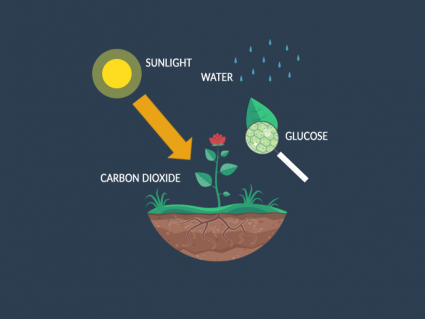




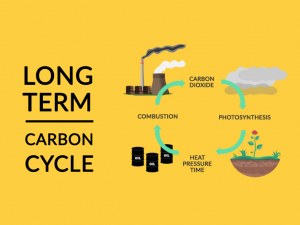
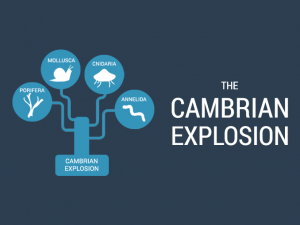


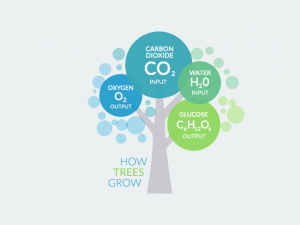


Does a butterfly that left Mexico also return there, or does a new generation do it?
Do Monarchal Butterflies have a short winter life cycle, with a fresh generation on the way north, and another before heading back to Mexico?
ie. Three life cycles for one seasonal cycle?
How high do they fly to catch favorable seasonal wind currents?